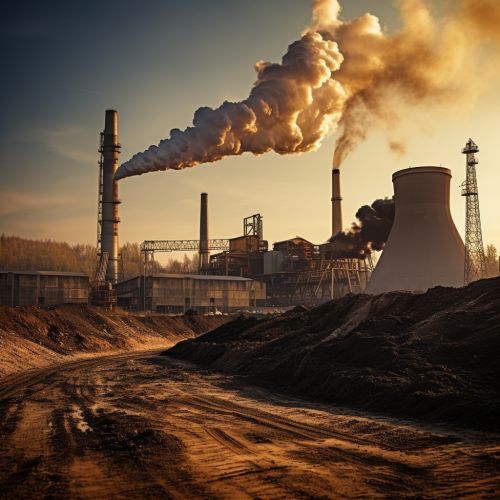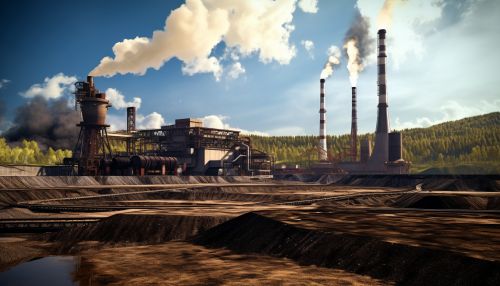Fossil Fuels
Introduction
Fossil fuels are hydrocarbons, primarily coal, fuel oil or natural gas, formed from the remains of dead plants and animals. In common dialogue, the term fossil fuel also includes hydrocarbon-containing natural resources that are not derived from animal or plant sources. These are sometimes known instead as mineral fuels. The burning of fossil fuels by humans is the largest source of emissions of carbon dioxide, which is one of the greenhouse gases that allows radiative forcing and contributes to global warming.
Formation
The formation of fossil fuels takes millions of years. It begins with the decomposition of dead organic matter, primarily plants, under heat and pressure over a long period of time. This process, known as diagenesis, transforms the organic matter into a waxy material called kerogen. Further heat and pressure then transform kerogen into fossil fuels such as oil, natural gas, and coal. The specific conditions and materials present during this process determine the type of fossil fuel that is formed.


Types of Fossil Fuels
There are three main types of fossil fuels: coal, oil, and natural gas.
Coal
Coal is a black or brownish-black sedimentary rock that can be burned for fuel and used to generate electricity. It is composed primarily of carbon, along with various other elements such as hydrogen, sulfur, oxygen, and nitrogen. Coal is extracted from the earth through both surface and underground mining.
Oil
Oil, also known as petroleum, is a liquid fossil fuel that is used primarily for heating and transportation. It is formed from the remains of tiny marine plants and animals that died millions of years ago. These remains were covered by layers of sediment and rock, and over time, heat and pressure transformed them into oil.
Natural Gas
Natural Gas is a fossil fuel that is formed when layers of buried plants and animals are exposed to intense heat and pressure over thousands of years. The energy that the plants and animals originally obtained from the sun is stored in the form of carbon in natural gas. Natural gas is a nonrenewable resource because it cannot be replenished on a human time frame.
Extraction and Use
Fossil fuels are extracted from the earth through a variety of methods, including drilling, mining, and fracking. Once extracted, they are processed and burned to produce energy. This energy is used in a variety of ways, from powering our homes and cars to running factories and generating electricity. However, the extraction and use of fossil fuels have significant environmental impacts, including air and water pollution, habitat destruction, and global warming.
Environmental Impact
The extraction and use of fossil fuels have a significant impact on the environment. The process of extracting these fuels from the earth can lead to land degradation and loss of biodiversity. In addition, the burning of fossil fuels releases large amounts of greenhouse gases, such as carbon dioxide and methane, into the atmosphere. These gases trap heat from the sun, leading to an increase in the Earth's average temperature, a phenomenon known as global warming. This in turn leads to climate change, which can cause a variety of environmental problems, including rising sea levels, extreme weather events, and changes in agricultural productivity.
Alternatives to Fossil Fuels
Given the environmental impacts of fossil fuels, there is growing interest in developing and using alternative energy sources. These include renewable energy sources such as solar power, wind power, and hydroelectric power, as well as nuclear power. These energy sources have the potential to provide a significant portion of our energy needs, while reducing our dependence on fossil fuels and our impact on the environment.
